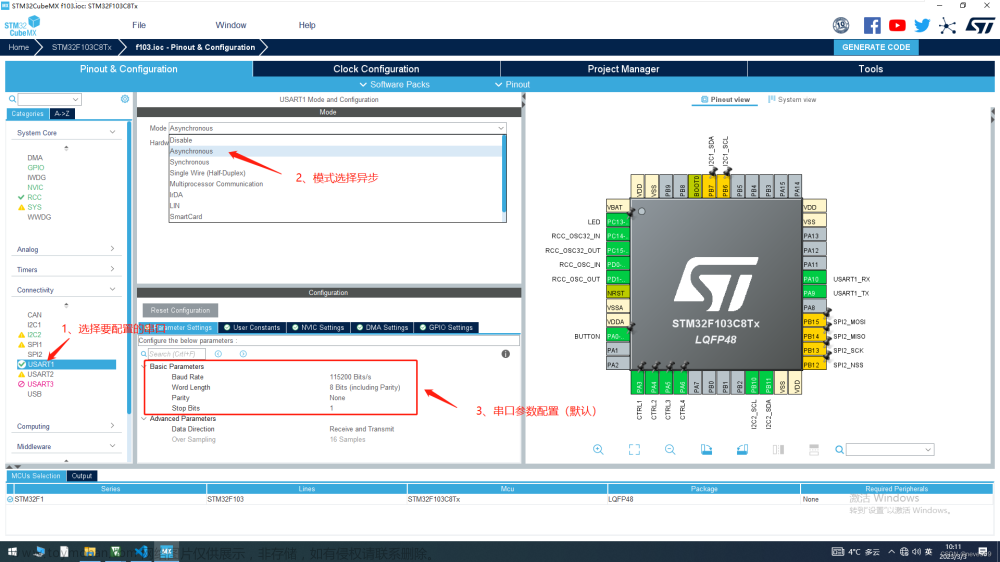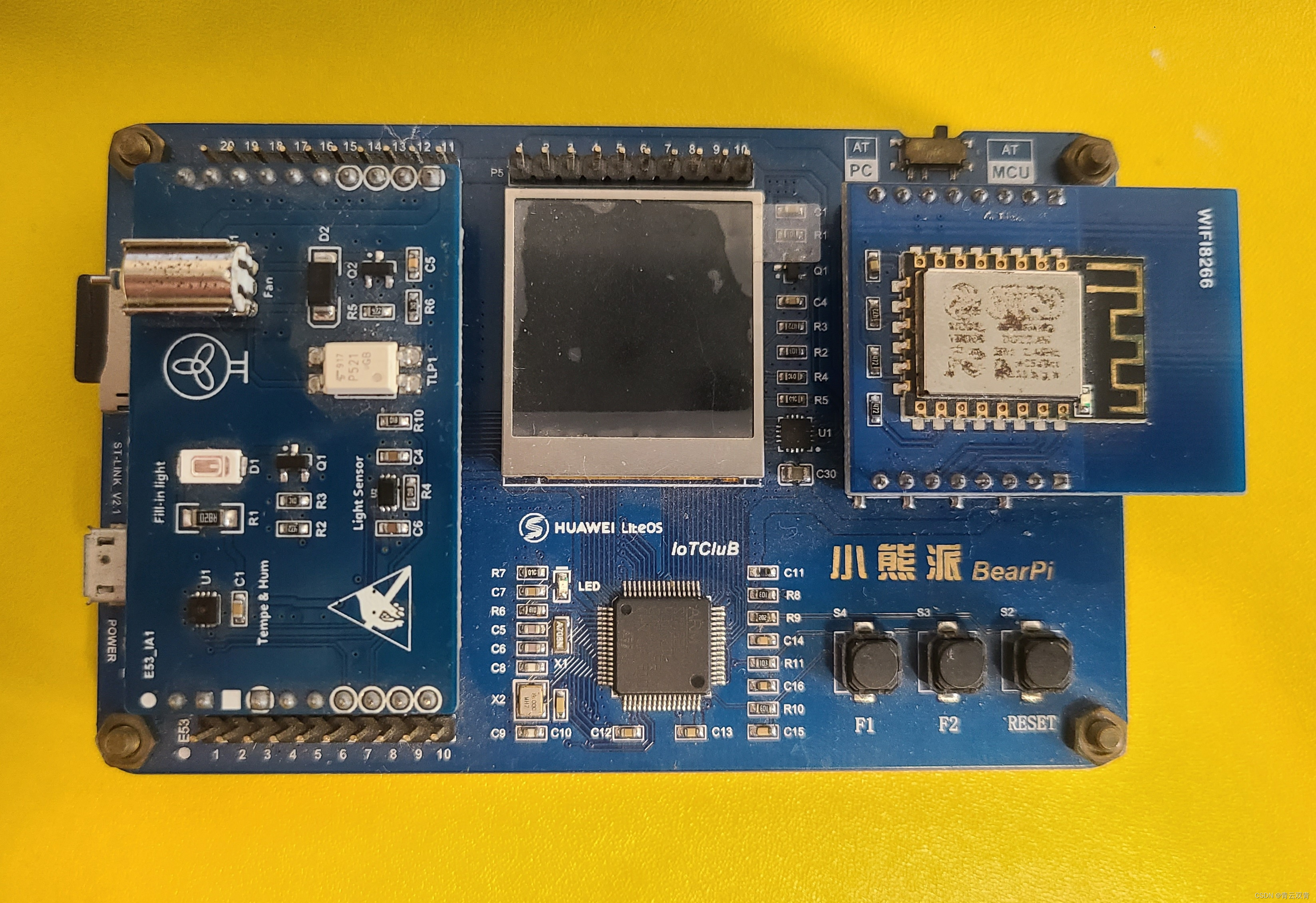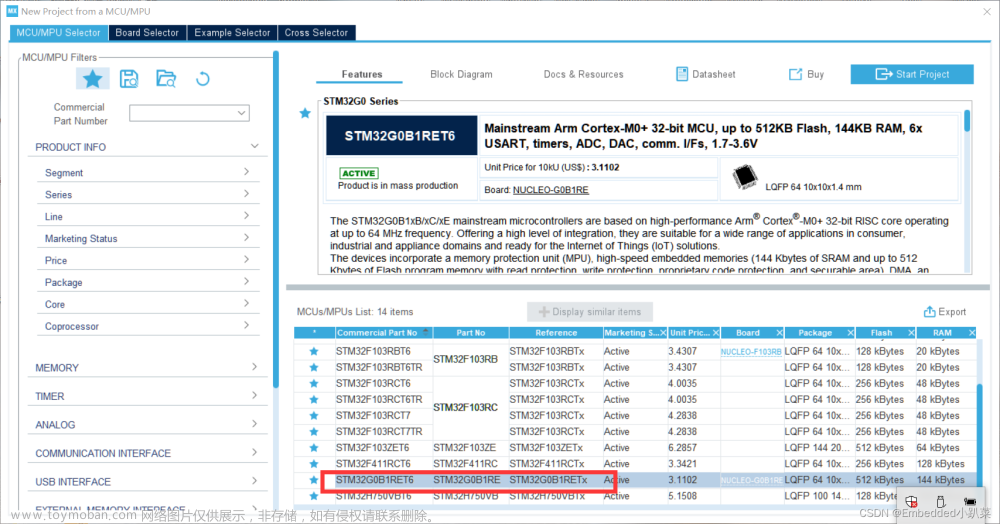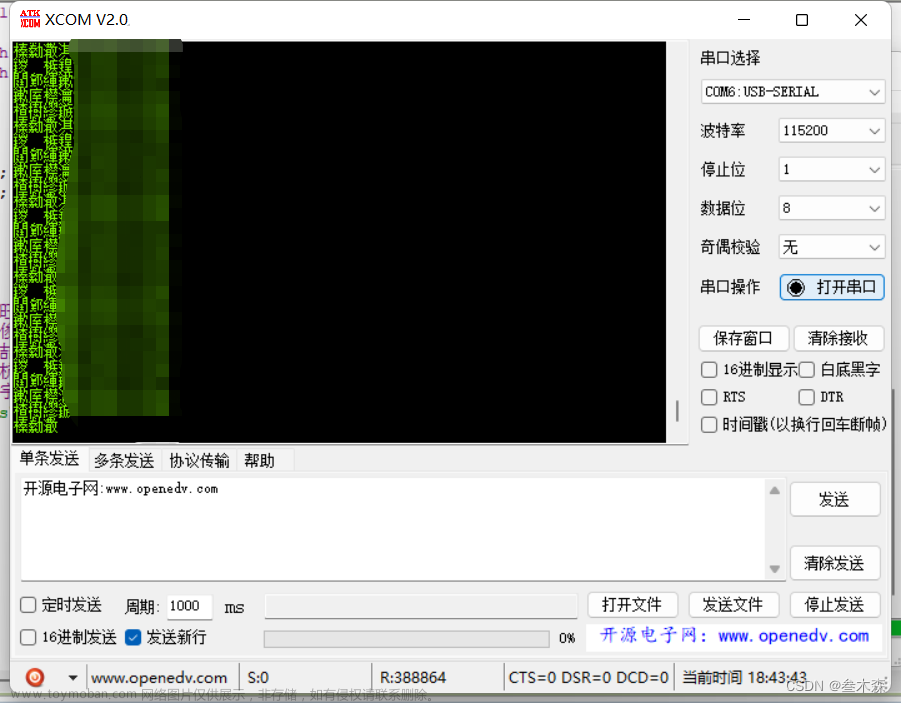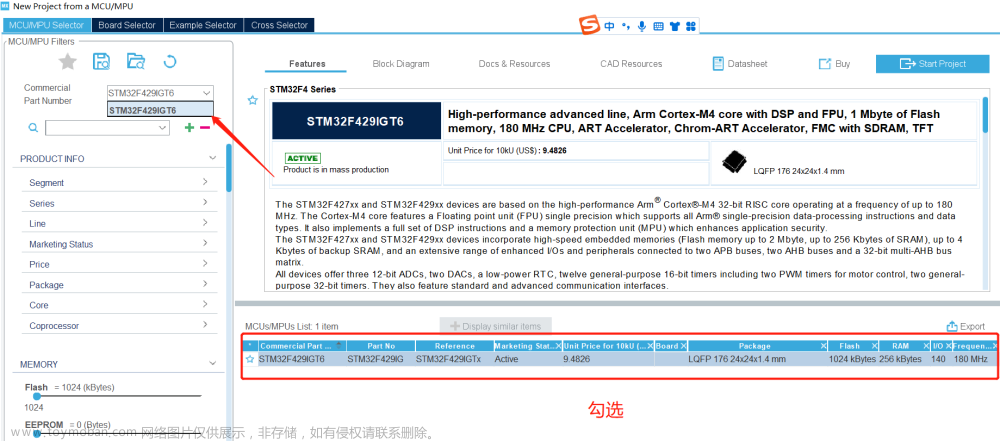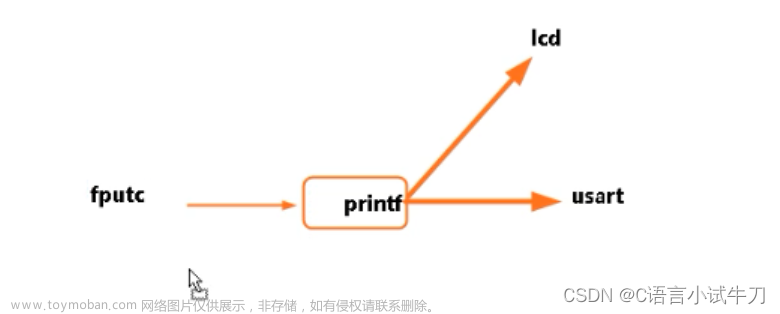一.背景知识
我们知道我们在进行编程的时候,遇到问题,经常通过打印信息进行调试,在java中使用的是System.out.println打印到输出窗口。在C语言中使用的是printf打印到输出窗口。而我们用keil进行编程的时候也是使用的C语言所以也可以使用printf,但是我们知道,keil中没有输出窗口。那我们如何使用printf呢?这里我们只需要重定向一下,将printf重定向到USART1(串口1)–这样我们就能通过串口1将信息打印到上位机(串口助手)。这里也有一个小知识点:下载程序也是通过串口1下载到单片机的内存中。
二. 重定向printf到USART1
这里我就直接给出重定向的代码。我们只需要包含这段代码。同时包含<stdio.h>这个头文件就能使用printf,信息将会输出到串口助手上面。
int fputc(int ch, FILE *f)
{
while((USART1->SR&0X40)==0);//循环发送,直到发送完毕
USART1->DR = (u8) ch;
return ch;
}
三.使用printf打印hello,world到串口助手
这里我就做一个小实验,打印hello,world到串口助手。注意串口1的引脚是PA9.PA10我们需要配置一下。代码如下:
3.1 usart.c
#include "usart.h"
#include "stm32f10x.h"
int fputc(int ch, FILE *f)
{
while((USART1->SR&0X40)==0);//循环发送,直到发送完毕
USART1->DR = (u8) ch;
return ch;
}
void uart_init(u32 bound){
//GPIO端口设置
GPIO_InitTypeDef GPIO_InitStructure;
USART_InitTypeDef USART_InitStructure;
NVIC_InitTypeDef NVIC_InitStructure;
RCC_APB2PeriphClockCmd(RCC_APB2Periph_USART1|RCC_APB2Periph_GPIOA, ENABLE); //使能USART1,GPIOA时钟
//USART1_TX GPIOA.9
GPIO_InitStructure.GPIO_Pin = GPIO_Pin_9; //PA.9
GPIO_InitStructure.GPIO_Speed = GPIO_Speed_50MHz;
GPIO_InitStructure.GPIO_Mode = GPIO_Mode_AF_PP; //复用推挽输出
GPIO_Init(GPIOA, &GPIO_InitStructure);//初始化GPIOA.9
//USART1_RX GPIOA.10初始化
GPIO_InitStructure.GPIO_Pin = GPIO_Pin_10;//PA10
GPIO_InitStructure.GPIO_Mode = GPIO_Mode_IN_FLOATING;//浮空输入
GPIO_Init(GPIOA, &GPIO_InitStructure);//初始化GPIOA.10
//Usart1 NVIC 配置
NVIC_InitStructure.NVIC_IRQChannel = USART1_IRQn;
NVIC_InitStructure.NVIC_IRQChannelPreemptionPriority=3 ;//抢占优先级3
NVIC_InitStructure.NVIC_IRQChannelSubPriority = 3; //子优先级3
NVIC_InitStructure.NVIC_IRQChannelCmd = ENABLE; //IRQ通道使能
NVIC_Init(&NVIC_InitStructure); //根据指定的参数初始化VIC寄存器
//USART 初始化设置
USART_InitStructure.USART_BaudRate = bound;//串口波特率
USART_InitStructure.USART_WordLength = USART_WordLength_8b;//字长为8位数据格式
USART_InitStructure.USART_StopBits = USART_StopBits_1;//一个停止位
USART_InitStructure.USART_Parity = USART_Parity_No;//无奇偶校验位
USART_InitStructure.USART_HardwareFlowControl = USART_HardwareFlowControl_None;//无硬件数据流控制
USART_InitStructure.USART_Mode = USART_Mode_Rx | USART_Mode_Tx; //收发模式
USART_Init(USART1, &USART_InitStructure); //初始化串口1
USART_ITConfig(USART1, USART_IT_RXNE, ENABLE);//开启串口接受中断
USART_Cmd(USART1, ENABLE); //使能串口1
}
3.2 usart.h
#ifndef __USART_H
#define __USART_H
#include "stdio.h"
//如果想串口中断接收,请不要注释以下宏定义
void uart_init(u32 bound);
#endif
3.3 main.c
#include "usart.h"
#include "stdio.h"
void main()
{
uart_init(115200);
printf("hello,world!\n");
printf("hello,world!\n");
printf("hello,world!\n");
}
四. 实验现象
我们这样只需要按一下复位键就能出现了打印信息了(由于我们这里没在while(1)中一直打印,所以程序跑一下就结束了。)为什么不在while(1)中一直打印呢,由于stm32运行速度较快,如果放入while(1)中,打印的数据量太多,串口助手容易死机。你们可以自己实验一下! 文章来源:https://www.toymoban.com/news/detail-555515.html
文章来源:https://www.toymoban.com/news/detail-555515.html
五.结语
整个程序到这里就结束了。学会这个printf重定向到串口1,对于你程序的调试就方便多了。你只需要加上如上代码就行了。你学会了吗?文章来源地址https://www.toymoban.com/news/detail-555515.html
到了这里,关于STM32使用printf重定向到USART(串口)并打印数据到串口助手的文章就介绍完了。如果您还想了解更多内容,请在右上角搜索TOY模板网以前的文章或继续浏览下面的相关文章,希望大家以后多多支持TOY模板网!

